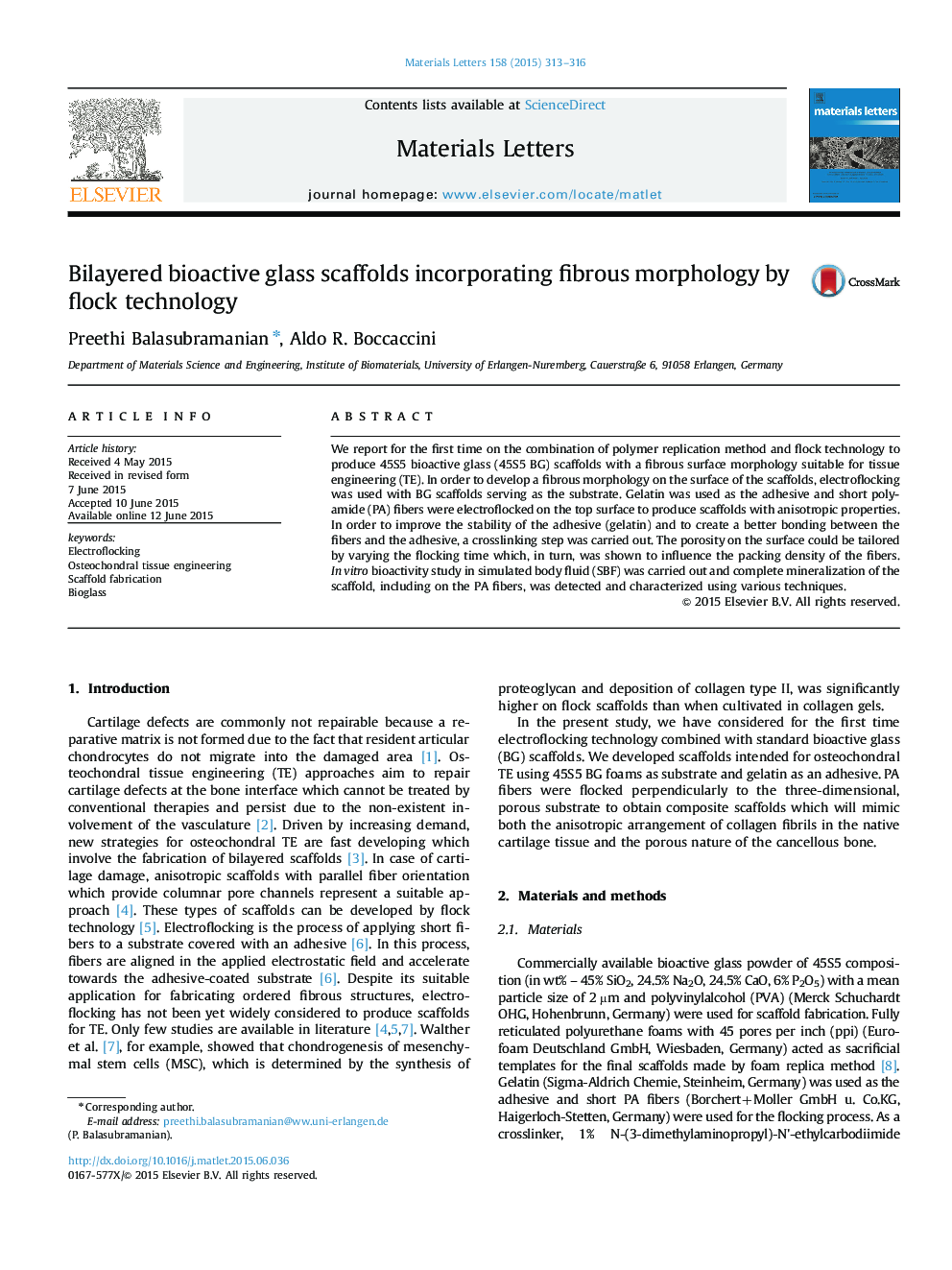| Article ID | Journal | Published Year | Pages | File Type |
|---|---|---|---|---|
| 1642414 | Materials Letters | 2015 | 4 Pages |
•Fabrication of Bioglass® scaffolds by foam replica technique and electroflocking.•Optimization of gelatin solution to be used as a bio-adhesive.•Vertical alignment of flocked polyamide fibers to the gelatin adhesive and scaffold.•Complete mineralization of the flocked polyamide fibers after the bioactivity study.•The packing density of fibers on the surface can be tailored.
We report for the first time on the combination of polymer replication method and flock technology to produce 45S5 bioactive glass (45S5 BG) scaffolds with a fibrous surface morphology suitable for tissue engineering (TE). In order to develop a fibrous morphology on the surface of the scaffolds, electroflocking was used with BG scaffolds serving as the substrate. Gelatin was used as the adhesive and short polyamide (PA) fibers were electroflocked on the top surface to produce scaffolds with anisotropic properties. In order to improve the stability of the adhesive (gelatin) and to create a better bonding between the fibers and the adhesive, a crosslinking step was carried out. The porosity on the surface could be tailored by varying the flocking time which, in turn, was shown to influence the packing density of the fibers. In vitro bioactivity study in simulated body fluid (SBF) was carried out and complete mineralization of the scaffold, including on the PA fibers, was detected and characterized using various techniques.
Graphical abstractFigure optionsDownload full-size imageDownload as PowerPoint slide
